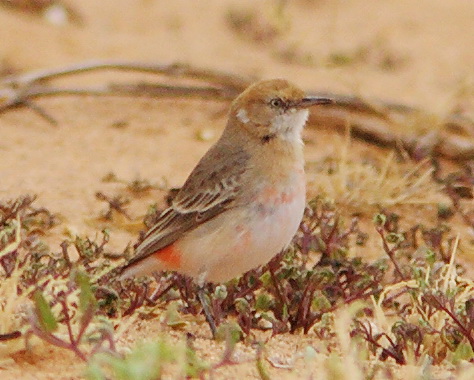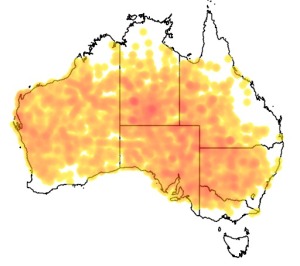Colours
Distinguishing features
They have long, thin legs; a pointy, downward curving bill; and a brush- like tipped tongue. Adult males are covered in brown feathers, have red crowns and under parts; a black mask around their eyes; and white throats. Females and younger Chats are colored similarly, but with paler markings. The males are usually more brightly colored than females, especially during the breeding season. (Wikipedia)
Size
- From 10 cm to 13 cm (Length of specimen)
Wingspan
- Wingspan data is not yet available.
Synonyms
Distribution
Distribution and habitat preferences
They are endemic to Australia. They can be found in deserts, semi-arid climates, woodlands, grasslands, and coastal shrublands in the central part of Australia from the west coast to the Great Dividing Range and from the tropics to the south coast. Generally, they tend to inhabit areas on the fringes of wet regions, where it is more dry.
They live in various types of shrubland: saltbush, blue bush, acacia, and samphire. It moves to wetter areas when rainfall is insufficient, which means there aren't enough nutrients produced for the birds to consume). Flocks of Crimson Chats may wander over a wide area in their range to track rain and so the best flowers and nectars. However, they do not follow routine seasonal longtime migrations. (Wikipedia)
Diet
They eat insects and spiders that are on the ground or in shrubs, and they can use their brush-like tongue to extract nectar or take seeds from flowers close to the ground. They walk more often than they hop and are usually seen on or near the ground. (Wikipedia)


